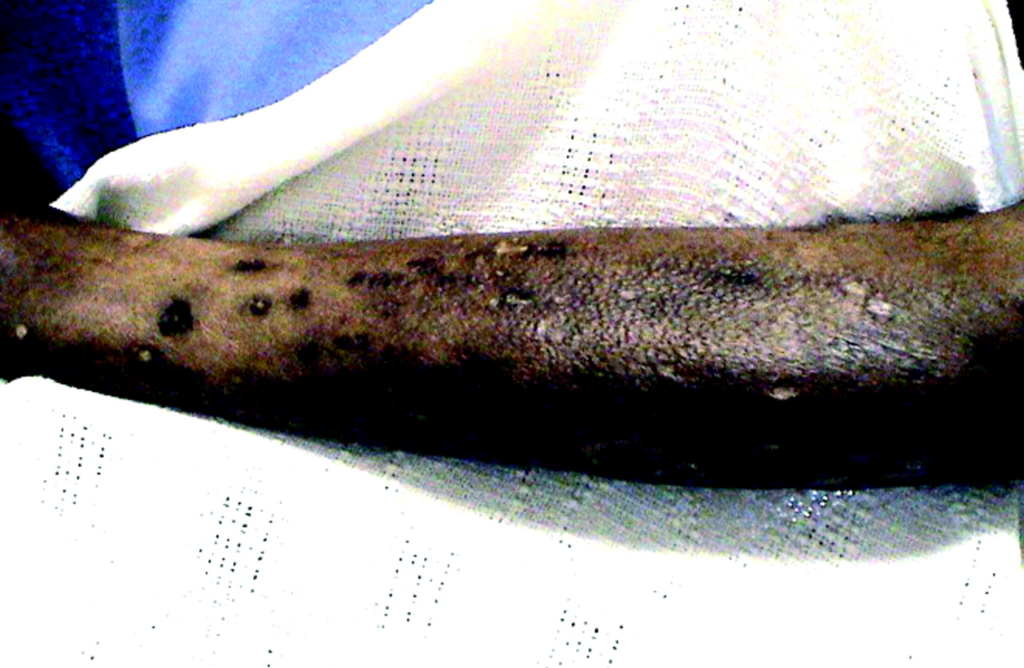Clostridium Genus is an obligate anaerobes. They appear as a rod-shaped under the micrscope. There are 3 types of Clostridium bacteria which commonly exists and cause diseases and infections to the human body.
- C. Botulinum – this bacteria produces the world’s deadliest toxin- botulinum. The bacterium is commonly found in improperly handled meats. Botulinum in small quantities is used in medication to treat muscle spasms, and in cosmetics to lessen the appearance of wrinkles.
- C. tetani – It is a bacteria that causes tetanus.
- C. Perfringens – It is a bacteria that found in decaying vegetation and in the human intestinal tract. Infections with the bacterium can cause tissue necrosis and gas gangrene.
- C. Difficile is a type of bacteria that can cause colitis, a serious inflammation of the colon.
Common symptoms of Clostridium Bacteria





1. C.Botulinum
There are 3 common types of Botulisms:
- Foodborne botulism. The harmful bacteria thrive and produce the toxin in environments with little oxygen, such as in home-canned food.
- Wound botulism. If these bacteria get into a cut, they can cause a dangerous infection that produces the toxin.
- Infant botulism. This most common form of botulism begins after Clostridium botulinum bacterial spores grow in a baby’s intestinal tract. It typically occurs in babies between the ages of 2 months and 8 months.
Symptoms of Foodborne & Wound Botulism
- Difficulty swallowing or speaking
- Dry mouth
- Facial weakness on both sides of the face
- Blurred or double vision
- Drooping eyelids
- Trouble breathing
- Nausea, vomiting and abdominal cramps
- Paralysis
Symptoms of infant botulism
- Constipation, which is often the first sign
- Floppy movements due to muscle weakness and trouble controlling the head
- Weak cry
- Irritability
- Drooling
- Drooping eyelids
- Tiredness
- Difficulty sucking or feeding
- Paralysis

2. C.Tetani
Clostridium tetani is a rod- shaped, anaerobic bacterium of the genus Clostridium.. C. tetani is found as spores in soil or as parasites in the gastrointestinal tract of animals. C. tetani produces a potent biological toxin, tetanospasmin, and is the causative agent of tetanus. Here are the symptoms of C.Tetani infection:
- Jaw cramping.
- Sudden, involuntary muscle tightening (muscle spasms) – often in the stomach.
- Painful muscle stiffness all over the body
- Trouble swallowing.
- Jerking or staring (seizures)
- Headache.
- Fever and sweating.
- Changes in blood pressure and fast heartbeat rate.


3. C.Perfringens
Clostridium perfringens (C. perfringens) is a bacterium widespread in the environment and in the intestines of people and animals. It can form spores that are very tough and are not killed by cooking or boiling. It produces a toxin that makes people ill.
Symptoms of C.Perfringens:
- Blisters
- Tachycardia
- Swelling
- Jaundice


4. C.Difficile
C.Difficile is a type of bacteria that can cause colitis, a serious inflammation of the colon. Infections from C. diff often start after you’ve been taking antibiotics. It can sometimes be life-threatening.
Mild symptoms of C.Difficile:
- Watery diarrhea that happens three to four times a day for several days
- Stomach pain, cramping, or tenderness
- Diarrhea more than 10 times a day
- severe cramping
- fever
- nausea
- Loss of appetite/weight loss
- Dehydration
- Rapid heart rate
References :
- AskMayoExpert. Botulism. Rochester, Minn.: Mayo Foundation for Medical Education and Research; 2017.
- Ferri FF. Botulism. In: Ferri’s Clinical Advisor 2018. Philadelphia, Pa.: Elsevier; 2018. https://www.clinicalkey.com. Accessed May 29, 2018.
- Pegram PS, et al. Botulism. https://www.uptodate.com/contents/search. Accessed May 30, 2018.
- Botulism. Centers for Disease Control and Prevention. https://www.cdc.gov/botulism/index.html. Accessed May 29, 2018.
- Principles of home canning. National Center for Home Food Preservation. http://nchfp.uga.edu/publications/publications_usda.html. Accessed May 29, 2018.
